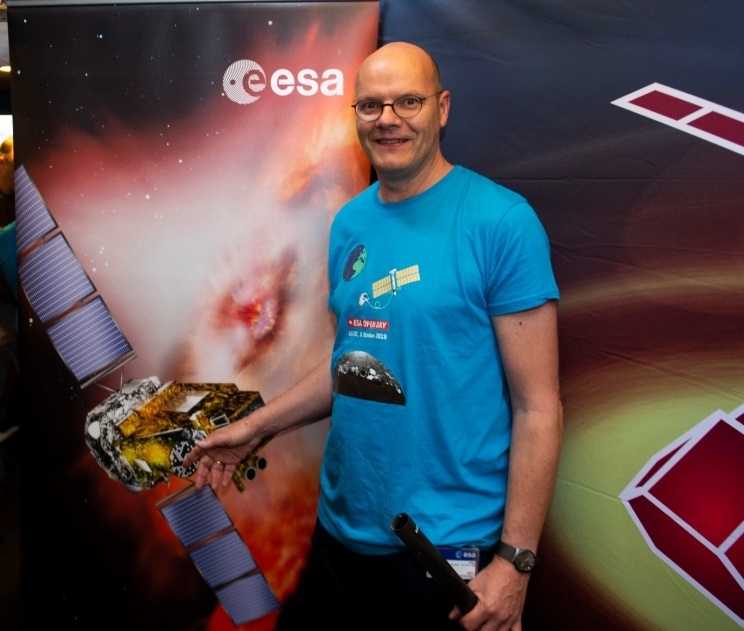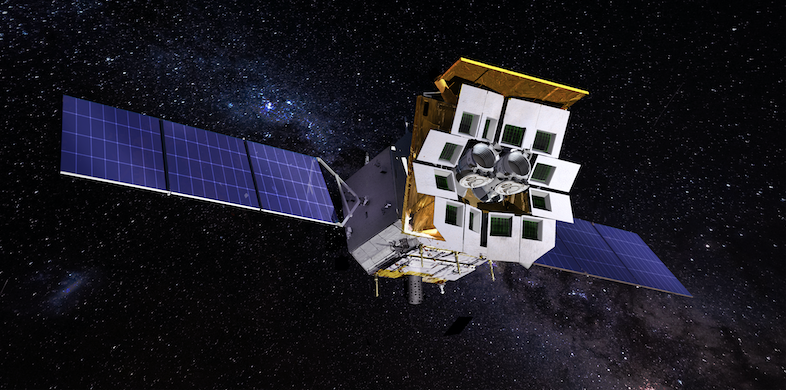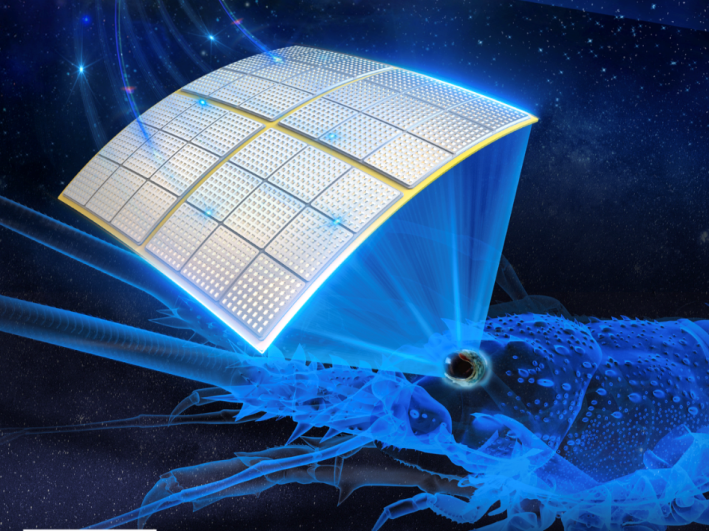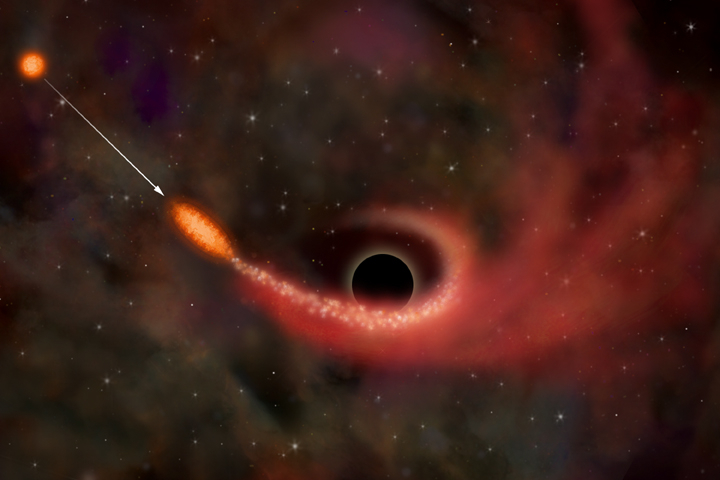Int'l Cooperation · 29 Jul 2021
Working together to Explore Transients in the X-ray Universe
–An Interview with Dr. Erik Kuulkers, ESA Project Scientist for Einstein Probe
Working together to Explore Transients in the X-ray Universe
–An Interview with Dr. Erik Kuulkers, ESA Project Scientist for Einstein Probe
Editor’s Note:
Einstein Probe (EP), a science satellite designed for monitoring and detecting high-energy transients from X-ray wavelengths, is supported by the Chinese Academy of Sciences (CAS) under the Phase-II of its Strategic Priority Program on Space Science (SPPSS-II) and meanwhile by the European Space Agency (ESA) as a Mission of Opportunity. BCAS is honored to invite Dr. Erik Kuulkers, the ESA Project Scientist for EP to share with us what the cooperation on EP will lead to.

Dr. Erik Kuulkers, scientist at ESA
BCAS: Thank you very much for accepting the invitation to the interview. As we know, you have been working as the Project Scientist for the INTErnational Gamma-Ray Astrophysics Laboratory (INTEGRAL), which has been honored with quite some high-profile discoveries, including the detection and localization of a mixture of mysterious radio bursts from SGR 1935+2154 in April 2020. This exciting discovery has helped connect magnetars with fast radio bursts. Congratulations!
Now comes the first question: Comparing with INTEGRAL, the Einstein Probe (EP) mission is targeting different objects. Does it take you a lot of efforts to adapt to the new role?
Erik: For me the change in mission is not a big difference. First of all, during most of my scientific career I have dealt with various transient phenomena, at X-ray and gamma-ray energies. Second, many of the high-energy transients which are the subject for EP are also targets for INTEGRAL, for instance, gamma-ray bursts, black-hole X-ray binary outbursts and high-energy counterparts to gravitational wave events and ultra-high energy neutrino events. EP, however, will continuously survey the night sky, allowing also to probe deeper than currently flying high-energy missions. So, all in all, for me it is almost natural to move into a transient hunter mission, such as EP. Note that for the moment, aside from being the ESA Project Scientist for EP, I will stay Project Scientist for INTEGRAL, which allows me to be the guardian of the transient X- and gamma-ray sky in a broad wavelength range.
BCAS: Would you please briefly introduce your role as the Project Scientist for the EP mission at ESA? What are your major responsibilities?
Erik: My primary responsibility is to ensure that the European scientific community can optimally exploit the opportunities afforded by EP. I will provide scientific support to the EP mission and act as a focus for the interests of the European scientific community in the mission. During the Development phase I monitor the progress of the European contributions to the mission. Together with ESA’s Science Coordination Office, in collaboration with the mission PI, YUAN Weimin1 and the MPE representative, Kirpal Nandra, we wrote the EP Science Management Scheme, to assure maximum scientific exploitation according to the proportion of the contribution of the different agencies, i.e., 80 to 10 to 10 %, for CAS, ESA and MPE, respectively. I will become part of the Science Management Committee (SMC) which includes members appointed by the three agencies, to manage the overall science exploitation of the mission. Last but not least, I also support ESA outreach concerning EP. Of course, when the probe flies, I like to get my hands on the data myself!

Illustration of the Einstein Probe mission (Credit: CAS/MicroSat)
BCAS: Before the launching of EP, what are the major concerns/responsibilities of the ESA science team of EP? What about after the launching?
Erik: The above-mentioned SMC will be part of EP’s Science Team (EPST). The EPST will be composed of scientists, appointed by the three agencies, that will form a single science team in 80-10-10 proportion (CAS-ESA-MPE). The EPST will include also various lower-level Science Topical Panels. The latter are teams which focus on specific science topics to be done by EP, and are coordinated by one Chair or two co-Chairs. The topics will be defined by the Executive Board of the SMC, which comprises the mission Principal Investigator (Chair), the ESA Project Scientist (co-Chair), the MPE team lead (co-Chair), and one additional scientist proposed by CAS. The other members of the SMC will consist of the Science Topical Panel chairs, one independent scientist appointed by MPE and one independent scientist appointed by ESA.
Our major concerns at the moment are to set up the Science Team and the Science Topical Panels, as well as appoint an ESA-supported scientist from ESA’s member state on the SMC. Before launch we will advise on various aspects, i.e., calibration activities, operation aspects related to science performance to the EP Science Centre, as well as defining science management policies on publications, data rights, duration of proprietary period, exploitation strategies, etc.. The SMC will also establish agreements with external facilities for follow-up activities. Many of these activities will continue after launch, and the SMC will then also monitor the long-term average proportion of EP science return to evaluate whether this is satisfactory with respect to the 80-10-10 model.
BCAS: Would you introduce to us the science team at ESA? Who will be there working on EP? What are their respective focuses?
Erik: As I mentioned before, I am currently also the Project Scientist for ESA’s currently operating gamma-ray observatory INTEGRAL, and became ESA’s Project Scientist for EP in 2018. My main aim is to maximise the science output for EP, for the European community. Also, I will be accompanied by the already mentioned soon-to-be ESA appointed scientist as the interface to the European science community. In principle, there is not an explicit science team within ESA for EP, but ESA will further facilitate the European community to participate in the mission, through joining the Science Topical Panels.
We do have an ESA engineering study team (led by Project Coordinator Andrea Santovincenzo) in charge of the technical activities related to the ESA contributions. They are supported by experts at ESA/ESTEC (Noordwijk, The Netherlands) in mechanics, optics and X-ray testing and at ESA/ESOC (Darmstadt, Germany) in satellite communications.
BCAS: How would you value the cooperation so far between the ESA scientists and their CAS counterparts on EP? Has the cooperation suffered a lot from the COVID-19 pandemic? Are you happy with the progress so far? Will there be any in-person meeting joining the international team together before the launching, which is set for next year?
Erik: My main interaction up to now is with the EP PI, YUAN Weimin. We are frequently in contact to inform each other on the progress in various areas, and exchange information for, for example, presentations to the scientific community. Over the past years we also had once or twice a year joint collaboration workshops with CAS and MPE, where we discussed the collaborative hardware and programmatic developments, as well as a more scientific oriented session, such as addressing the EP Science Center status and Ground Segment. All of the interactions over the last year have been online, due to COVID-19. This makes the communication more challenging, but we have successfully managed so far.
After Summer, when we start to assemble the Science Team, there will be interaction on a larger scale. I am looking forward to that, and will be happy to be more involved in defining the optimum way to exploit Einstein Probe and becoming more involved in the scientific analysis of the data. Face-to-face meetings would have my preference, and, of course, it would be fantastic if I could witness the launch of Einstein Probe in China itself.
BCAS: As far as I know, EP is the first Mission of Opportunity of ESA with China. Would you please give us some overall ideas about ESA’s policy for Missions of Opportunity? What does it take to become a Mission of Opportunity at ESA? How important is such type of missions for ESA, and for the society?
Erik: EP is indeed the first Mission of Opportunity for ESA with CAS. However, ESA and CAS were (and still are) working already together on the joint mission Solar wind Magnetosphere Ionosphere Link Explorer (SMILE)2.
Missions of Opportunity are long-established, important building blocks within ESA’s Science Programme. They provide an important element of flexibility, allowing ESA and the community to respond quickly to opportunities that arise to participate in missions from partner agencies. Only missions that have been fully approved by the partner agency can be eligible for a Mission of Opportunity proposal in the Science Programme.
Apart from EP, hopefully many more opportunities to partner up with CAS in the future will appear. An example may be the X-ray timing mission “enhanced X-ray Timing and Polarimetry” (eXTP)3, which is being studied by ESA member states (e.g., ASI), but has not been brought forward yet as a Mission of Opportunity to ESA.
BCAS: What support will ESA offer to such Missions of Opportunity?
Erik: The spirit of a Mission of Opportunity is to provide a tool through which the ESA’s Science Programme can implement a relatively small, non-enabling participation in a partner-led mission, in exchange for a clear opportunity for the broad space science community in Europe to access scientific opportunities (for example, access to data or participation in mission science teams) that would otherwise not be available to them. The total contribution from ESA of a Mission of Opportunity is capped at 50 Million Euros. ESA offers engineering support, hardware or ground station contributions to Missions of Opportunity, as well as supporting scientist(s) to work on the mission. In the case of a Mission of Opportunity, ESA will only join such a mission as a junior partner. However, European Member State space agencies may also be involved in the mission (such as MPE in Einstein Probe). Therefore, the full European contribution can be significantly more than the ESA contribution alone.
BCAS: Why do we need EP? Do we have any detector working in space for the monitoring and observations of transients? If yes, how different are they from EP? If not, why?
Erik: We do have a fleet of high-energy missions in space from various space agencies and various other missions in the pipeline to be launched and/or studied, including all-sky monitors with sensitivities at various energies. Examples are Fermi/GBM, Swift/BAT, and MAXI. However, many high-energy transients are rare and faint, and it is thus challenging to find them. Furthermore, the parameter space in faint flux and short timescale is largely unexplored. Clearly, a next generation of X-ray monitors with higher sensitivity and higher monitoring cadence is needed, which we expect to realise with the Wide-field X-ray Telescope onboard Einstein Probe. It will be 1–2 orders of magnitude more sensitive at soft X-rays, and has a large field-of-view. The large field-of-view is established by a novel technique using Lobster-eye imaging.

Equipped with lobster-eye micro-pore optics, the Wide-field X-ray Telescope (WXT) onboard EP will be an ideal monitor for sporadic, fast-fading transients. (Credit: ACTA OPTICA SINICA)

Illustration of a tidal disruption event, in which a star is torn apart and falls into the mighty gravity field of a black hole. Such catastrophic events, violently changing with time, are among the targets for EP. (Credit: NASA and S. Komossa)
BCAS: Specifically, what will be the most important science issues we can pursue with the help of EP? Is EP coming timely for the pursuit of these issues?
Erik: Although we know of various categories of high-energy events nowadays (e.g., tidal disruption events, high-redshift gamma-ray bursts, supernova shock breakouts), various scientific questions still need to be resolved. With EP we expect to see tens of these transients per week, a factor of 10–20 more than Swift and MAXI.
Its main goals are related to the finding of black holes of various masses, as well as other compact objects and to detect the high-energy radiation in coincidence to gravitational wave-events. And, there will probably be also events unknown to date. EP, with its 1.1 steradian field-of-view, high cadence, and high sensitivity will be ideal to study such transient events. It is extremely timely as all-sky facilities appear to observe the universe also at other wavelengths, such as the Rubin Observatory’s Legacy Survey of Space and Time (LSST) which will cover a third of the sky each night, in the optical from the ground, and is expected to detect millions of optical transients. These and other facilities will be complementing each other, allowing a new window to the transient universe.
BCAS: Once a target transient is detected, EP will send an alert through downlink to help other instruments follow up and join the observation. What kind of new discoveries can we expect from such synergic observations, very likely from different wavelengths? What will this mean for transient astronomy?
Erik: For some time now, multi-wavelength information is key to understanding the objects in our universe. Each wavelength reveals different information; combined you get the whole picture. So, whenever a high-energy transient is detected by Einstein Probe it is important to relay that information to the astronomical community at large. And, the sooner the better, as many transient phenomena fade quickly. It is therefore, crucial to downlink the facts and figures down to the ground and sending out an alert, so that follow-up observations can be conducted as fast as possible, with coverage at as many wavelengths as possible. This has been exemplified by, for example, the discovery of an electro-magnetic signal by Fermi and INTEGRAL accompanying a gravitational wave event from two coalescing binary neutron stars in August 2017. Although we hope to find, for example, more prompt counterparts to gravitational wave events and high-energy neutrino events, it is difficult to predict what new discoveries lie ahead of us. The realm of new phenomena may be in those that are faint and at extra-galactic distances. For sure, EP will revolutionize our view of the (X-ray) transient universe.
BCAS: Once launched, EP is to work for at least three years in orbit. What are you expecting for EP’s first-year observations?
Erik: Every high-energy transient is an interesting target, in my opinion, so EP will bring us lots of interesting data to work on. Especially those transients followed-up by the more sensitive, dedicated, Follow-up X-ray Telescope onboard EP, the FXT, will be interesting to study. Moreover, within just half a year, EP will have covered the whole sky, and will give us at first an idea of the population of transients in our own Galaxy as well as far, far away, in the more distant universe. I am also looking forward to collaborating with the colleagues from EPST, and the SMC in particular, with its mix of different cultures, and I hope together we can make EP a success.
1 A researcher at the National Astronomical Observatories, Chinese Academy of Sciences (NAOC).
2 SMILE is a joint mission between the Chinese Academy of Sciences and the European Space Agency aiming to detect solar wind as well as its interaction with the Earth’s magnetosphere. On the CAS side, it is supported under the Phase-II of the Strategic Priority Program on Space Science (SPPSS-II) together with EP.
3 A large-scale international consortium involving over 20 countries dedicated to research in black holes and neutron stars. Initiated and led by the Institute of High Energy Physics, CAS, it is currently also under the umbrella of SPPSS-II for background study.